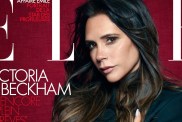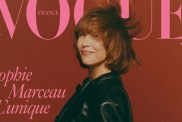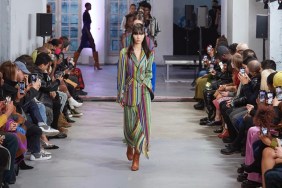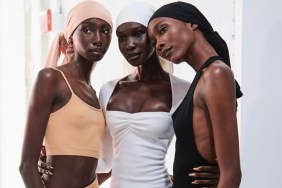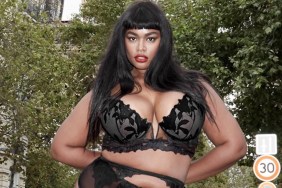Last week, I reported on some statements Kelly Cutrone made during a conference call promoting the upcoming season of America’s Next Top Model. As part of a conversation with a handful of entertainment writers, the fashion publicist and reality show judge acknowledged that “society has a hyper-emphasis on thin” and said she believed that the trend comes directly from consumers. The fashion and beauty industries, she argued, are just taking cues from the market, and that their only real objective is making money.
The remarks (which also included a critique of Dove‘s “Real Beauty” ad campaign) stirred up a fair amount of controversy, as some people felt that Cutrone was misrepresenting the role fashion plays in shaping consumer expectations and establishing the beauty standard.
The online retailer Modcloth, which recently launched a new plus size category, reached out to me to respond directly: “We believe strongly that her comments are more representative of an ‘old school’ belief system and with the rise of technology, the fashion industry is changing rapidly.”
I spoke with the e-commerce site’s Category Manager Samara Fetto, who told me that Modcloth expanded its plus size offerings specifically because the company realized there was a huge, unmet demand for more variety in sizing: “We know the plus size community has been underserved for so long, and the one thing that kept coming out was that [the plus size customer] didn’t feel like she was included…we learned there was a tremendous need for plus size products.”
Modcloth cites a variety of statistics that helped inform its decision to better cater to this underserved market — more than 50% of women identify as plus size, more U.S. women report wearing a size 16 than a size 2 and 0 combined — but the most impressive numbers were gathered internally from user behavior on the site: the average order for Modcloth’s plus customer is 25% higher than the average; the number of items in each order is 17% higher; the plus size customer is 66% more likely to share on social networks.
Fetto: “She is more engaged, spending more money and buying more products.”
Despite the obvious demand for plus clothing, Fetto told me that out of the 1,500 vendors the retailer typically works with, only 30 were initially prepared to produce plus garments (the number has since grown to over a 100).
Modcloth has a retro aesthetic that lends itself to a broad range of figure-flattering styles, but even more straightforward contemporary brands have seen an overwhelmingly positive response when they’ve shifted the focus away from straight sizes. A summer and swimwear online campaign for H&M+ featuring model Jenny Runk went viral when it showed up on the retailer’s U.S. website without any copy flagging it as a ‘plus’ collection.
“We think that Jenny showed our summer and swimwear garments in a very good way and we are very happy with the pictures,” H&M told me via email. “At H&M we try to have a mix of models for our different campaigns throughout a season. Our aim is not to convey a certain message or show an ideal but to find a model who can illustrate our collections in an inspiring and clear way.”
Runk is represented by JAG Models, the first-ever all-sizes agency. JAG was recently founded by Gary Dakin and Jaclyn Sarka, formerly co-directors of Ford Models‘ plus division.
Dakin told me that clients book plus size models “constantly now. They book models for almost every major department store including Bloomingdale’s, Nordstrom, Macy’s, etc. Glamour, Elle and every major publication. I believe they are doing it because the public is responding so well to diversity in fashion…The hyper thin trend is supported by all sides of the equation while being ridiculed by the same people, which is interesting to watch. The designers have trended all over the place. Gaultier, Mark Fast and others have included women of different sizes in their shows and campaigns which has been sporadic. It has been nice to see women of all sizes being included in the editorials and campaigns so I do not necessarily buy into the hyper thin thing. If that was truly the case, would I even be here for you to ask the question?”
Previously: Kelly Cutrone: ‘Society Has a Hyper-Emphasis On Thin and That Trend Comes From the Consumers’



